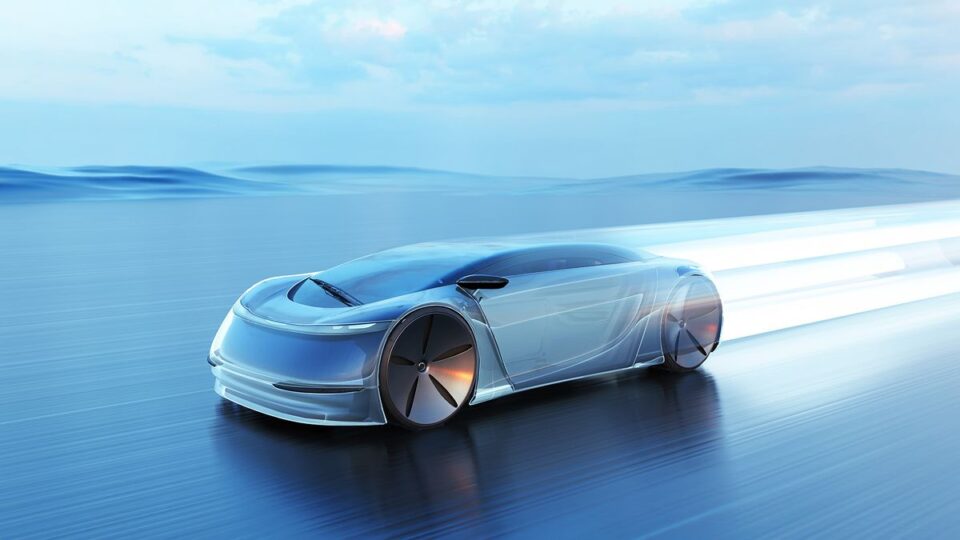The rise of electric cars is often celebrated as a breakthrough in addressing climate change and reducing greenhouse gas emissions. You may think that these eco-friendly vehicles provide a straightforward solution to environmental concerns.
However, it is essential to evaluate the true environmental impact of electric vehicles (EVs) thoroughly. By delving into the full lifecycle of these cars—from production to disposal—you gain a clearer understanding of the sustainability challenges they present. If you want to find more details on this topic, check out https://pacificsands.biz/.
This section will clarify the complexity behind the assertion that EVs are entirely beneficial for the environment. You will learn about key factors contributing to their overall impact, including emissions produced during manufacturing, sourcing of energy for charging, and the intricacies surrounding battery production. This comprehensive analysis sets the stage for a deeper exploration of environmental benefits and the realities of electric vehicle adoption.
Understanding Electric Vehicles and Their Rise in Popularity
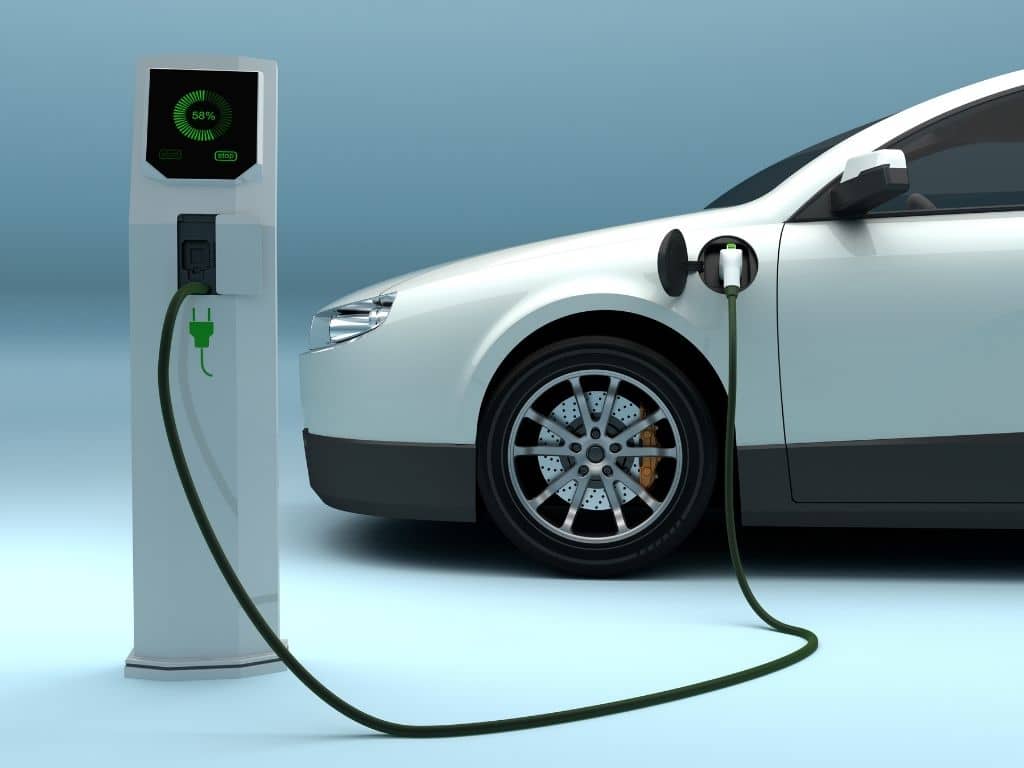
Electric vehicles represent a transformative movement in the automotive industry, emphasizing sustainable practices and eco-conscious driving. The rise in EV popularity correlates with an increasing desire among consumers to embrace green technology. This shift is not just driven by personal preference; significant commitments from manufacturers are paving the way for a future dominated by electric mobility.
Prominent auto manufacturers, such as General Motors and Volvo, are leading the charge by announcing plans to transition to fully electric fleets in the coming years. Such initiatives highlight a growing trend among carmakers to align with rising consumer expectations for environmentally friendly options. As regulations around carbon emissions become stricter, the demand for electric vehicles is expected to surge further.
- Decreasing reliance on fossil fuels.
- Lower emissions contribute to cleaner air.
- Technological advancements improve performance and affordability.
The commitment to eco-conscious driving extends beyond personal responsibility; it involves a collective movement towards embracing the benefits of green technology. This alignment between governmental policies, consumer choices, and manufacturer innovations plays a crucial role in fostering the growth of electric vehicles. As awareness of global environmental issues heightens, the future of transportation appears brighter than ever with the ongoing rise in EV popularity.
| Manufacturer | Commitment Year | Target Fleet Composition |
| General Motors | 2035 | Fully Electric |
| Volvo | 2030 | Fully Electric |
| Tesla | N/A | All Electric |
The True Environmental Impact of Electric Cars

Understanding the environmental impact of electric cars involves examining various eco-friendly practices associated with their production and use. These practices aim to reduce harm to the environment while promoting sustainability. Electric vehicles are often recognized for their advantage of zero tailpipe emissions, yet the full picture of their ecological footprint extends beyond simple usage. Awareness of eco-friendly practices helps you appreciate the broader implications of adopting electric cars.
Defining Eco-Friendly Practices
Eco-friendly practices encompass a range of efforts designed to mitigate negative environmental effects. In the context of electric vehicles, these practices focus on sustainable manufacturing methods, responsible resource sourcing, and effective waste management. Key components include:
- Using renewable materials in car production.
- Implementing energy-efficient manufacturing processes.
- Promoting recycling programs for end-of-life vehicles.
- Encouraging hybrid technologies that combine electric and traditional fuels.
By integrating these eco-friendly practices, the automotive industry can significantly enhance the environmental impact of electric vehicles, offering a more sustainable alternative to conventional cars.
The Role of Government and Automaker Initiatives
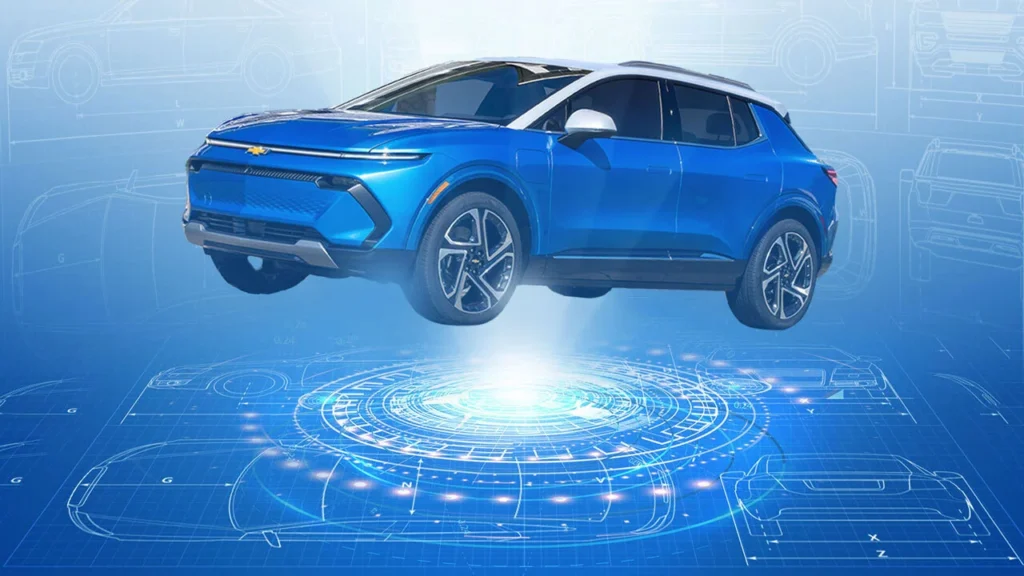
Government initiatives play a vital role in promoting the shift towards electric mobility. Strategies such as tax incentives for electric vehicle buyers and investment in charging infrastructure facilitate greater market acceptance. These initiatives encourage consumers to consider electric cars as viable options while aiding the transition to cleaner transportation solutions.
Simultaneously, automaker strategies contribute to the overall effort to reduce emissions and transform vehicle production. Auto manufacturers are investing in research and development to enhance battery technology and reduce production emissions. Collaboration between governments and automakers can yield significant advancements in creating a sustainable transportation ecosystem.
| Initiative Type | Description | Examples |
| Government Initiatives | Policies aimed at facilitating electric vehicle adoption and infrastructure development. | Tax credits for EV purchasers, grants for charging stations. |
| Automaker Strategies | Efforts by car manufacturers to reduce environmental impact through innovation and sustainable practices. | Research into solid-state batteries, investment in renewable materials. |
Electric Vehicle Emissions ─ A Comparison with Traditional Cars
Electric vehicles represent a significant shift in automotive technology, promising reduced emissions compared to traditional cars. While electric vehicles produce no tailpipe emissions, the entire lifecycle, including manufacturing, plays a critical role in their overall environmental impact. Understanding the balance between production vs. tailpipe emissions is essential to assess the true benefits of electric vehicles compared to traditional combustion engine vehicles.
Production Emissions vs. Tailpipe Emissions
The production phase of electric vehicles often results in higher emissions compared to traditional cars. Many studies indicate that approximately 46% of the total emissions from electric vehicles arise during production, notably from battery manufacturing. In contrast, only around 26% of emissions from traditional cars can be attributed to their production. This information highlights the importance of considering all emissions sources when evaluating the environmental benefits of electric vehicles.
Efficiency of Electric Motors vs. Internal Combustion Engines
When examining the efficiency of electric motors compared to internal combustion engines, electric vehicles show a notable advantage. Electric motors convert electricity into motion with greater efficiency, often exceeding 90%, while typical internal combustion engines achieve efficiencies below 30%. This significant difference means that electric vehicles can utilize energy more effectively, leading to reduced electric vehicle emissions during operation. The overall environmental impact is shaped not only by emissions during production but also by the efficiency of the vehicles in use.
| Aspect | Electric Vehicles | Traditional Cars |
| Production Emissions | 46% | 26% |
| Operational Efficiency | 90%+ | Below 30% |
| Tailpipe Emissions | None | Present |
This comparison illustrates the complex nature of electric vehicle emissions. It emphasizes the necessity for ongoing improvements in battery technologies and production processes to enhance the sustainability of electric vehicles across their entire lifecycle.
Lithium-Ion Battery Production and Its Environmental Costs
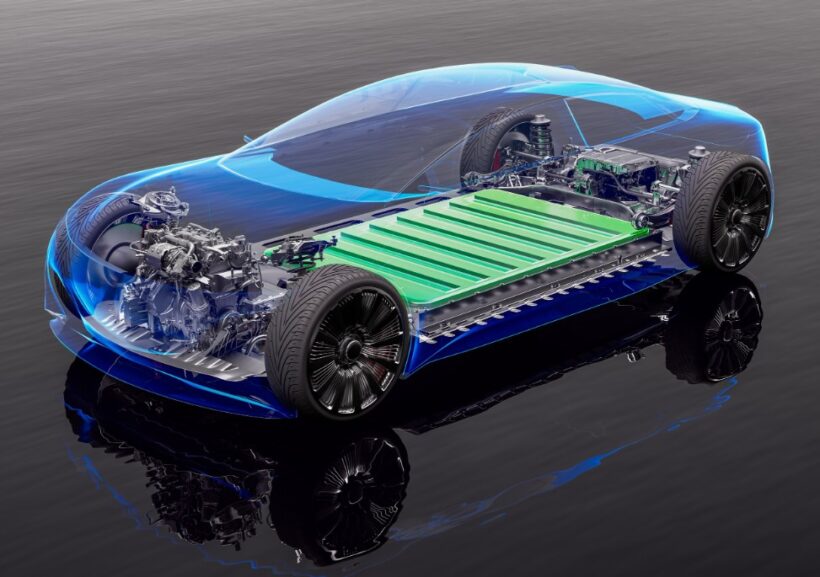
The rise of electric vehicles has brought significant focus to lithium-ion battery production. This process generates notable environmental costs that extend beyond the vehicles themselves. Understanding these costs is vital for assessing the overall impact of electric transportation.
Mining Impacts ─ Water Use and Pollution
The extraction of lithium, cobalt, and nickel for battery production often involves intensive mining activities. These processes can lead to substantial water use, particularly in arid regions. Mining pollution can affect local ecosystems, contaminating water supplies and impacting both wildlife and human populations. Communities near mining sites frequently bear the brunt of these environmental costs.
Carbon Footprint of Battery Manufacturing
The carbon footprint associated with manufacturing lithium-ion batteries deserves careful consideration. It has been estimated that producing just one electric vehicle can generate nearly 4 tonnes of carbon dioxide. This significant environmental cost arises from the energy-intensive processes involved in raw material extraction and battery assembly. As demand for electric vehicles grows, addressing this carbon footprint becomes increasingly urgent.
Recycling Challenges and Solutions
Battery recycling presents a critical challenge in mitigating environmental costs. Currently, recycling rates for electric vehicle batteries hover around 5%. Establishing effective recycling systems is essential to reducing waste and recovering valuable materials. Innovative approaches and technological advancements in battery recycling could pave the way for more sustainable practices moving forward.
| Aspect | Details |
| Water Use in Mining | High consumption leading to scarcity in local regions |
| Pollution Caused by Mining | Contamination of water bodies, affecting ecosystems |
| Carbon Footprint | Around 4 tonnes of CO2 per electric vehicle produced |
| Recycling Rate | Currently about 5%, indicating room for improvement |
| Future Solutions | Focus on innovative recycling technologies |
Power Sources ─ The Role of Renewable Energy
The environmental advantages of electric vehicles (EVs) rely significantly on the energy sources utilized for charging. Understanding how these energy sources impact the electric vehicle benefits is crucial for enhancing sustainability. The overall effectiveness of EVs diminishes when they are powered primarily by fossil fuels, as evidenced by data showing that a considerable portion of electricity globally still comes from thermal energy sources.
How Energy Sources Influence Electric Vehicle Environmental Benefits
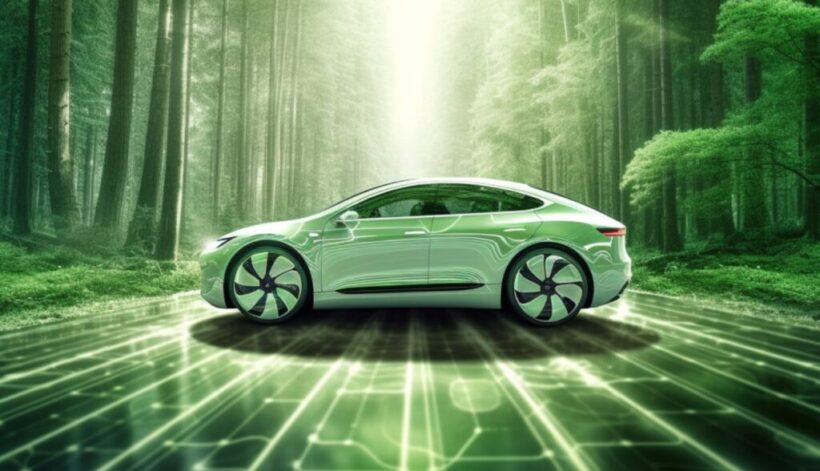
The transition to renewable energy sources such as wind, solar, and hydroelectric power can dramatically increase the environmental benefits of electric vehicles. These energy sources not only reduce greenhouse gas emissions but also contribute to a cleaner electricity grid. The reliance on renewables enhances the overall lifecycle emissions well-to-wheel of electric vehicles, making them a more viable option for sustainable transportation.
The Case for Switching to Green Energy for Charging
Switching to green energy for charging electric vehicles represents a pivotal step towards maximizing their positive environmental impact. A consistent shift in energy infrastructure towards renewables will lower carbon footprints associated with EV driving. As the energy mix evolves, the potential for electric vehicles to serve as a cornerstone for reducing emissions rises exponentially, leading to a more sustainable future for all.
Debunking Common Electric Car Myths
As electric vehicles gain traction in the automotive market, a number of electric car myths continue to cloud public perception. Understanding these myths can help you make informed choices regarding your vehicle preferences and environmental impact. Two critical areas warrant particular attention: the environmental benefits of electric cars and common misunderstandings surrounding battery lifespan and disposal practices.
Electric Cars and their Environmental Benefits
One prevalent myth suggests that electric cars are an unequivocal green alternative. In reality, while these vehicles do offer substantial environmental benefits, their impact varies based on several factors. The source of electricity used for charging plays a significant role. When powered by renewable energy, electric cars can minimize emissions significantly. In contrast, charging from fossil fuel sources can diminish these environmental benefits.
Addressing Misconceptions about Battery Lifespan and Disposal
People often harbor concerns regarding battery lifespan and disposal methods. Many believe that electric vehicle batteries have limited lifespans and that disposal poses severe environmental risks. Statistics indicate modern lithium-ion batteries can last from 8 to 15 years, contingent upon usage and maintenance. Furthermore, advancements in battery recycling processes are paving the way for more sustainable disposal methods, addressing many disposal concerns. Understanding the facts surrounding battery longevity and disposal can ultimately clear up these misconceptions.
| Issue | Misconception | Fact |
| Environmental Benefits | Electric cars are green, regardless of how they are charged. | Efficiency depends on the energy sources used for charging. |
| Battery Lifespan | All electric vehicle batteries wear out quickly. | Modern batteries can last 8 to 15 years with proper care. |
| Disposal Concerns | Disposing of electric car batteries is highly toxic. | Recycling technologies are improving, reducing environmental risks. |
Conclusion
As you consider your options for sustainable transportation, it’s essential to understand the multifaceted environmental impact of electric cars. While these vehicles offer significant reductions in tailpipe emissions compared to their gas-powered counterparts, the complexities of battery production and energy sourcing cannot be overlooked. The eco-conscious choices you make today will influence the future landscape of transportation.
Recognizing the challenges that electric vehicles face in terms of manufacturing emissions and lifecycle impacts is crucial. This awareness allows for informed decision-making when it comes to supporting initiatives that push toward greener practices and the adoption of renewable energy sources for charging. Such efforts will help further minimize the environmental impact of electric vehicles.
By working together—consumers, policymakers, and manufacturers alike—you can enhance the effectiveness of sustainable transportation options. As the electric car market continues to evolve, embracing innovative recycling methods and prioritizing energy efficiency will be vital. In doing so, you can help solidify the role of electric cars in fostering a greener and more sustainable future.
FAQ

What is the true environmental impact of electric cars?
The environmental impact of electric cars includes several aspects such as emissions during production, particularly from lithium-ion battery manufacturing, the power sources used for charging, and the lifecycle analysis of the vehicle. While they are often seen as eco-friendly, their overall environmental benefits depend on various factors including energy sourcing and recycling capabilities.
Are electric vehicles always better for the environment than traditional cars?
Not necessarily. While electric vehicles produce zero tailpipe emissions, their environmental benefits can be significantly reduced if they are charged using energy from fossil fuels. Additionally, the emissions from battery production and disposal also contribute to their overall carbon footprint. Therefore, a comprehensive assessment is necessary to determine their true impact on the environment.
How does lithium-ion battery production affect the environment?
Lithium-ion battery production involves mining for lithium, cobalt, and nickel, which can lead to water use issues and pollution. The manufacturing phase emits a substantial amount of carbon dioxide, with estimates suggesting nearly 4 tonnes of CO2 are generated for a single electric vehicle. Also, current recycling rates for these batteries are alarmingly low, which poses further environmental challenges.
What role do renewable energy sources play in enhancing the benefits of electric vehicles?
Renewable energy sources, such as wind, solar, and hydroelectric power, can significantly enhance the environmental benefits of electric vehicles by providing a cleaner power supply for charging. If EVs are charged predominantly through renewable energy, their overall carbon footprint can be reduced, meaning they can offer a more substantial reduction in greenhouse gas emissions.
What common myths exist about electric cars?
Many myths surround electric cars, including the belief that they are always the best environmental choice. Another misconception is regarding battery lifespan and disposal methods, leading to misguided perceptions about their overall environmental impact. It’s essential to clarify these myths to help consumers make informed decisions about electric car ownership.
What initiatives are being taken to promote electric vehicle adoption?
Governments and automakers are actively promoting electric vehicle adoption through various initiatives, such as tax breaks for EV buyers, investments in charging infrastructure, and commitments to transitioning to fully electric fleets. These actions are designed to enhance sustainability within the transportation sector and encourage the use of eco-friendly vehicles.

